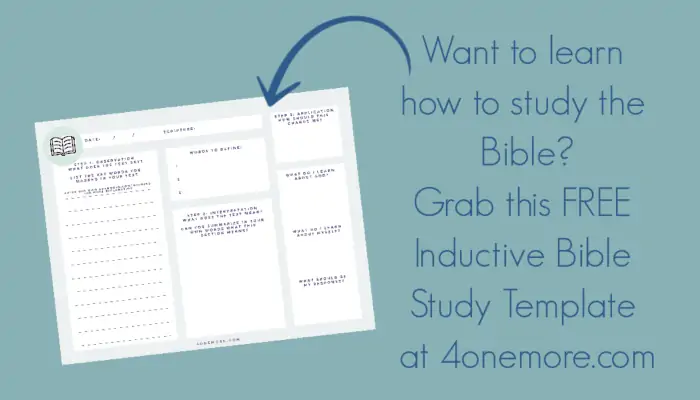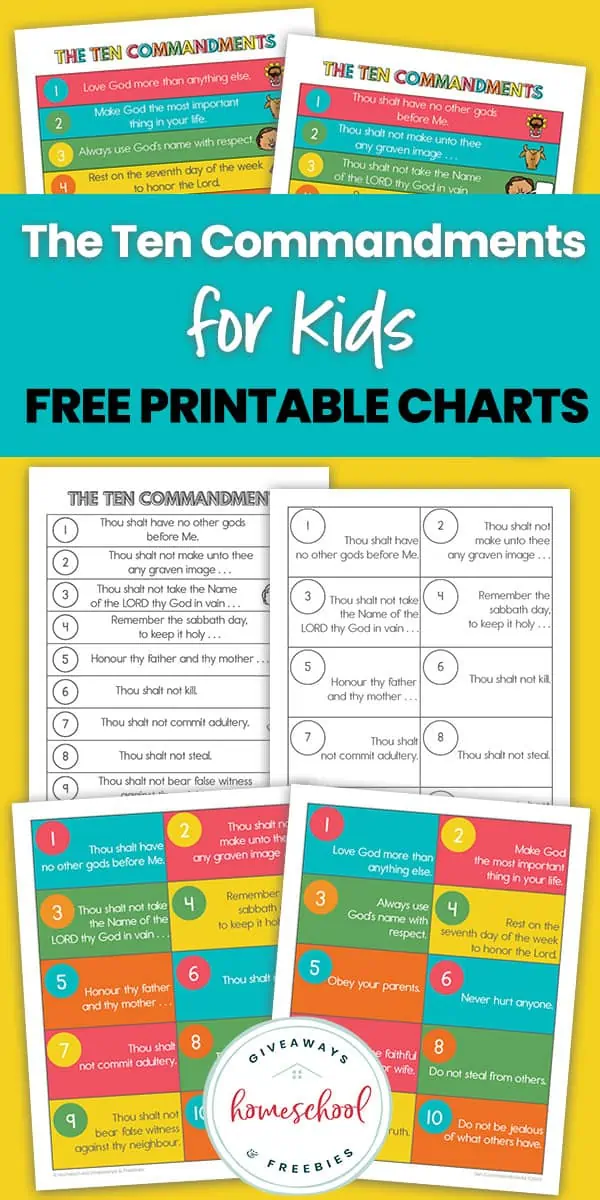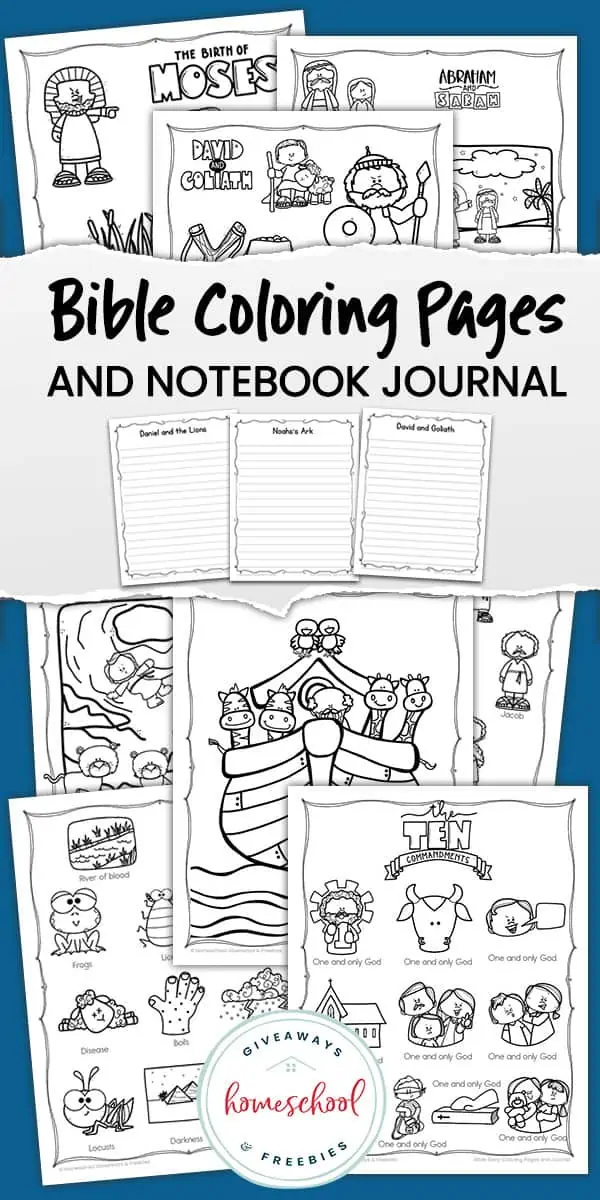How to Help Your Kids & Teens Study Scripture + Inductive Bible Study Template
Published:
August 31, 2020

Contributor:
Abby Banks
Disclosure: This post may contain affiliate links, meaning if you decide to make a purchase via my links, I may earn a commission at no additional cost to you. See my disclosure for more info.
If you’d like to help your kids learn to study through Scripture on their own (or together as a family), then download the Inductive Bible Study Template at the end of this post. You can use it with any passage of Scripture, and it will give you a proven system to use in your homeschool as you study the Bible.
Inductive vs. Deductive
You may hear the words “inductive” and “deductive” swirling around in relationship to Bible study. But what do they even mean? They are the two basic approaches to Bible study.
In the inductive method, you are making observations and then drawing conclusions from the passage, or finding the big idea.
Some of these observations might be:
- Key words
- Repeated ideas
- Compare/contrast
- Logic/argument
You’re starting from observation about the text (what does the text say?), then progressing to interpretation (what does the text mean?), and finally application (how should this change me?).
So with an inductive study, you are looking at all the little bits of information in the text and trying to find a common theme or main point. What is it all saying?
In contrast, a deductive approach to Bible study usually means that you are starting with a topic, a big idea, or a conclusion. Then, you’re searching the Bible to find passages that support this premise.
Topical Bible studies are a common approach that use the deductive method. They can be helpful, but they shouldn’t be all you use to study the Bible. This is because in a deductive method, you’re not really letting the text speak for itself. Instead, you are starting with a general statement, then looking for details to support it.
So a deductive or topical study might be about “worry and anxiety” and you would find all the passages of Scripture that talk about worry and anxiety. You will still learn truth, but you will miss the whole context of those verses. You will be interpreting those verses in a vacuum.
Three Steps to the Inductive Method
An Inductive Bible Study will challenge your assumptions, which is a good thing! It will also force you to dig into the text to find the interpretation, the big idea, and the application. This is not a surface-level type of Bible study method.
Inductive Bible studies dig into the actual text of Scripture, taking students through three steps and asking these questions of the text:
- Observation: What does the text say?
- Interpretation: What does the text mean?
- Application: How should this change me?
As you help your kids study Scripture, you’ll start with observation. In the Observation step, you’re looking for repetition, key words, as well as compare & contrast.
When you move to the Interpretation step, you’re figuring out how all these little bits of detail fit together to give you the meaning. This is where your child narrates, or summarizes, the main point.
Finally, in the Application step, you decide how you should respond to the text. What changes need to be made in thoughts or actions, or both?
The inductive method is excellent for so many learning styles. It encourages visual, kinesthetic, and auditory learners in its approach to studying the Bible.
How to use this Printable Template
You might think that this Bible study method sounds too hard for kids! But it’s not! However, having a little guidance can be super helpful when you’re just starting out.
You can find an inductive Bible Study Template at 4onemore.com and use it to study any passage.
Choose just one paragraph each day for study. Many Bibles show paragraph distinctions. If yours doesn’t, just choose one section to read. You will get the most benefit out of an inductive study if you work your way through an entire book of the Bible, paragraph by paragraph.
The Inductive Bible Study Template will walk you through the steps.
First, mark in your text and write down any of these things you notice in the passage:
- Key words (they seem important to the section)
- People
- Places
- Compare/contrast
- Repeated words
- Commands
- Illustrations
Next, define any unknown words and then try to summarize in your own words what the section means.
Finally, apply the passage to your own life. After reflecting on what you’ve learned about God and about yourself, you can see what your response should be. Ask the question, “How should this change me?”
If you’re looking for a book of the Bible to start using the inductive method with, then try these:
- Proverbs
- James
- I John
- Mark
Other Resources for Inductive Bible Study
If you’re looking for a resource that will help your kids study Scripture, then check out these resources. This Bible curriculum will take your kids and teens step-by-step through the inductive study method.
Psalm 1 Inductive Bible Study for Kids & Teens
Inductive Bible Study Courses: The Book of James (options for Little Fishes K-4 & grades 5-12)









